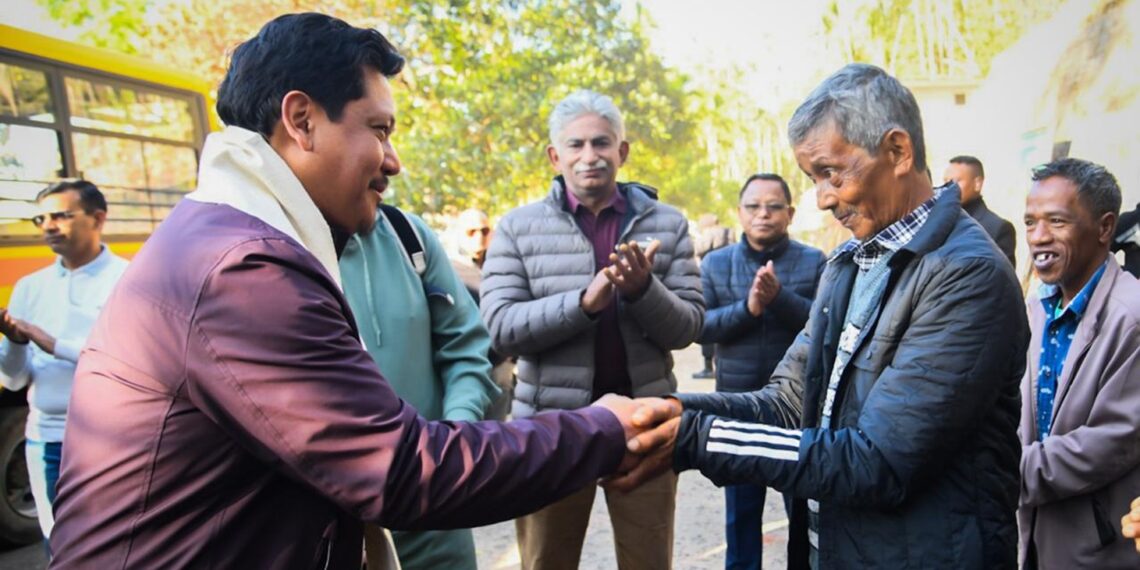Shillong: Meghalaya Chief Minister Conrad Sangma, accompanied by key cabinet ministers, including Health Minister Ampareen Lyngdoh and Public Health Engineering (PHE) Minister Marcuise N Marak, took part in a bus ride and trek to Siej village in the Shella Bholaganj block of East Khasi Hills.
The visit is part of a two-day cabinet retreat underway in Sohra, aimed at charting the state’s Vision 2032 for its 60th year of statehood.
This unprecedented cabinet retreat focuses on long-term strategies for the growth and development of Meghalaya.
As part of the initiative, the cabinet members embarked on the trek to Siej village, where they visited the iconic Umkar Living Root Bridge, a marvel of nature and sustainable engineering.
The visit also included a meeting with Hally War, the local headman and pioneer behind the weaving of the living root bridge.
Addressing the gathering at Siej, Chief Minister Sangma reaffirmed the government’s commitment to preserving age-old traditions while improving local infrastructure.
He emphasised the significance of the Living Root Bridge, which has been integral to the local community for over 300 years.
Originally crafted by the village’s ancestors, the bridge stands as a symbol of sustainable architecture and community-driven development.
ALSO READ: Meghalaya: Uncertainty persists over Sohra’s upgrade to district status
“The wisdom of our ancestors led to the creation of this beautiful and functional bridge,” said Sangma.
“It’s remarkable how the community has come together to preserve this tradition, ensuring that the younger generation learns to carry it forward.”
Hally War, who began weaving the bridge at the age of 10, has dedicated nearly 40 years of his life to maintaining the structure.
Speaking about his lifelong commitment, War shared, “At around 10 years old, I saw the difficulty people faced while crossing the river. It became clear to me that something lasting and sustainable had to be done. The idea came from my grandparents, who shared stories about the strength of living roots.”
The chief minister praised War’s efforts, acknowledging the immense patience and dedication required to maintain the living root bridge.
“This project shows the dedication necessary to create something sustainable. It’s a testament to the wisdom passed down through generations,” Sangma added.
During the visit, Sangma also announced several new infrastructure projects to enhance connectivity in the region.
These include the construction of new roads and the upgrading of school buildings, which aim to address the needs of rural communities.
“We are committed to improving access for farmers and residents, and we are also working to ensure that future generations have better educational opportunities,” the chief minister remarked.
Additionally, the potential for tourism development in the region was discussed.
Local sources indicated that nearly 10,000 tourists visit the Living Root Bridge annually.
“We recognise the importance of tourism for economic growth in the region,” Sangma noted.
“The Tourism Department will be tasked with developing the necessary facilities while ensuring that the natural and cultural heritage of the area is preserved.”
The visit highlighted the government’s focus on preserving Meghalaya’s rich cultural traditions while fostering growth and development in its rural communities.















